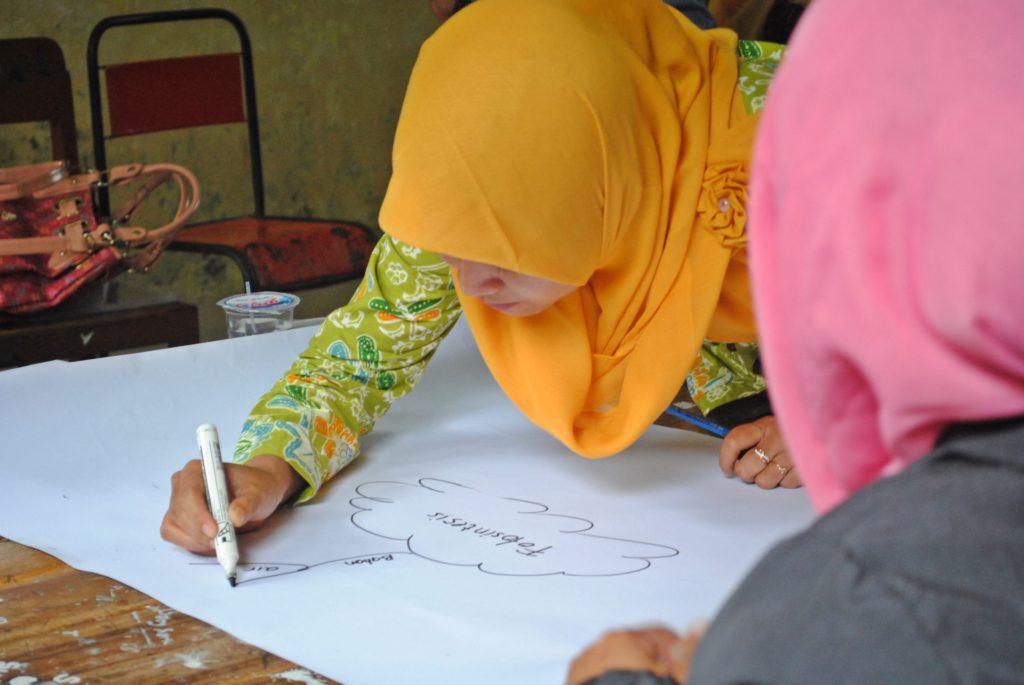Not familiar yet with the mind mapping technique? This comprehensive and extensive mind-mapping starter kit will be perfect for you.
This post encompasses everything, from what mind mapping is to the benefits of creating one. Additionally, it will highlight six critical steps of creating a powerful mind map.
Let’s dive into it, beginning from the basics.
What Is a Mind Map?

Sometimes known as a spider diagram, a mind map is essentially a visual thinking and brainstorming tool used to capture ideas and information. Mind maps have been proven to enhance creativity, productivity, and memory. A mind map starts with a central idea (the subject to be probed) and branches out into subtopics—further development of concepts emanates from the center out.
What Are Mind Maps Used For?

Everyone can benefit from the mind mapping technique. It dates back even to ancient Greece philosophers and Leonardo da Vinci during the Renaissance.
Here are a few examples of people who use mind mapping tools and techniques in their day-to-day work.
- Writers and people in the creative industry – Mind maps help spark inspiration or develop a practical structure to get you started.
- Marketing teams – They brainstorm, plan, and execute marketing campaigns through collaborative mind mapping techniques.
- Project managers – They uUse mind maps to plan projects from beginning to end with perfection.
- Educators and teachers – Educators use mind maps for innovative homework assignments, lesson planning, and group exercises in the classroom.
- Students – Sstudents of all ages can use mind maps to summarize subject information, take notes, and plan written assignments.
- Everyone – Ooutside of these fields, many people use mind mapping tools to organize and plan their careers, weeks, and goals.
Benefits of Mind Maps

Now you’re aware of what mind mapping is and know that it’s a powerful approach to brainstorming. However, you may still be wondering why you specifically should employ this technique.
Well, the benefits of mind mapping are incredible. Below is a quick rundown:
Easy Organization
There’s no better way to organize ideas than with a mind map. Regardless of how confused you feel, this tool makes everything make sense. Organized information and ideas are easier to recall. The visual representation of every connection remains in your mind.
Regardless of how stressed you are, everything begins to make sense once you start to organize all information in a mind map.
Brainstorming
Mind maps are a process. From one image to the next, one keyword to the other, the connections prompt the brain to bring other related ideas to the surface, too. This strategy will help you brainstorm and generate ideas like no other.
The magic in mind mapping technique is that it makes even the most complicated concepts seem simple. These concepts are developed further during brainstorming.
Here’s an example to help you better understand:
You’re trying to learn a foreign language. When creating a mind map, you can associate foreign words with keywords, images, and terms of the language you know well. You can further brainstorm to identify certain elements that’ll help you recall the foreign words effortlessly.
These elements might be suffixes or prefixes. While doing this with other learning and brainstorming techniques can be nearly impossible, it’s an easy and effortless feat with a mind map.
Guaranteed Results
The links in the mind map help the brain to retain knowledge for the long term.
According to a 2002 study published by the American Psychological Association, mind mapping helped medical students’ long-term retention of factual information by 10%. Since mind mapping aids this mental process, there’s a high likelihood that you’ll realize success in whatever issue you’re exploring with a mind map.
Saving Time
While developing a mind map, brainstorming ideas, and fitting in new information may take up a portion of your time, results are guaranteed in one go. This means that while a mind map may take time to create, you won’t be repeating tasks or wasting time on the same ineffective technique like you otherwise may be.
6 Steps to Make a Mind Map

When developing a mind map, there are various elements to consider, such as the central idea, subtopics, keywords, images, and colors. Let’s take a detailed look at these factors below:
Step 1: Enter the Main Topic

Write down the topic you have in mind. It can be an idea to develop, a decision to make, a problem to solve, or a project to clarify. Word it clearly and succinctly on a paper at the center of a mind map template.
Step 2: Brainstorm Topics

Once you have noted down the main concept, brainstorm supporting details such as tasks, ideas, and questions. You can use words, images, or keywords. Remember, this is a brief exercise intended to stir free thinking.
Step 3: Create Sub-Topics

To get your creative juices flowing, add some subtopics. The good thing about the mind map is that you can keep adding subtopics and aren’t limited to a few options. Remember, your mind map will unfold naturally as you add more information, ideas, and subtopics.
Step 4: Rearrange the Topics on Your Mind Map

You can rearrange the topics and subtopics in your mind map as you see fit. Most mind mapping tools allow you to easily drag-and-drop topics and subtopics. This will help you structure the topics and subtopics you brainstormed.
Step 5: Format & Add Images to Mind Map
Don’t forget to add visual elements and images to your mind map, as they have the power to put across much more info than words. Why is this important? Visual elements are processed immediately by the brain, which serves as visual cues to recall information.
Step 6: Take Notes and Begin Research
Using mind mapping tools, you can also attach additional links, notes, and other files to your map without sacrificing the great overview it provides.
Example of a Mind Map
Mind mapping can be about any topic or idea. Let’s say you want to create a mind map for a product launch.
During a launch, you must pay close attention to every small aspect, from the key product features to the media platform you intend to advertise it on. A mind map like the one we just created above makes it easy to capture everything that’s needed. Let’s glance at it one more time.



How Vibe Can Help You Build a Mind Map


Whether you need to solve a problem, plan a workflow, or brainstorm ideas, mind maps are a perfect way to turn those goals into reality.
To make the most of your mind map, try using an interactive whiteboard device. Pen and paper are okay for brief brainstorming sessions, but when it comes to sharing, collaborating, and presenting your project, a digital smart version is better. Smart whiteboards like the Vibe Board help your work look orderly and professional, allows you and your colleagues to collaborate remotely, and is sharable, editable, and interactive.
Below is a brief outline of how to use the mind map template in Canvas (Vibe’s built-in online whiteboard software for real collaboration):
- Select the mind map template – Choose the best template to enhance your project instead of working from scratch on a fresh document. The Canvas has a ton of practical templates that can fit your needs, or you can create your own custom template. Then share the link to your Canvas with your hybrid team to start a mind mapping session.
- Start with the main topic – Click anywhere on the Vibe Board to add a node with a topic you would like to explore.
- Brainstorm – Give your team a few minutes to note down ideas that come to mind when discussing the topic.
- Add subtopics – You can create subtopics around the main concept. You can have as many subtopics as you like.
- Use colors and images – Colors and images will ensure your ideas are visually organized. You can pick a new color for a branch or subtopic using Vibe’s specialized tools. You can also drop in any links, embed videos, and import images from Chrome or other third-party apps directly into your mind map Canvas.
- Find a natural stopping point – Replicate the process until you believe you’re at a great stopping point.
As you’ve seen, using an interactive whiteboard to brainstorm and create a mind map is as easy as ABC. Try Vibe Board today!
{{< blog/cta-download-new content=”S1 Buyers Guide” extra=”false” pdf=”https://vibe.us/pdf/S1-buyers-guide/?utm_campaign=mind-map-brainstorming&utm_medium=blog&utm_source=blog”>}}
FAQs
What is the importance of mind mapping?
Mind mapping has some profound benefits: it can help you discover more creative and better solutions to problems, facilitate brainstorming sessions with your team, improve information retention, and boost productivity.
Does mind mapping really work?
Evidence shows that mind mapping helps people plan and organize their thinking before starting a project. This is because you can employ the technique to build your ideas and observe how they interrelate with each other before opting for the best way to handle the task at hand.
Are mind maps effective?
Yes! Mind maps are effective anytime you want to organize thoughts, concepts, or ideas and see how they’re connected. They’re handy for problem-solving, brainstorming sessions, or note-taking.
